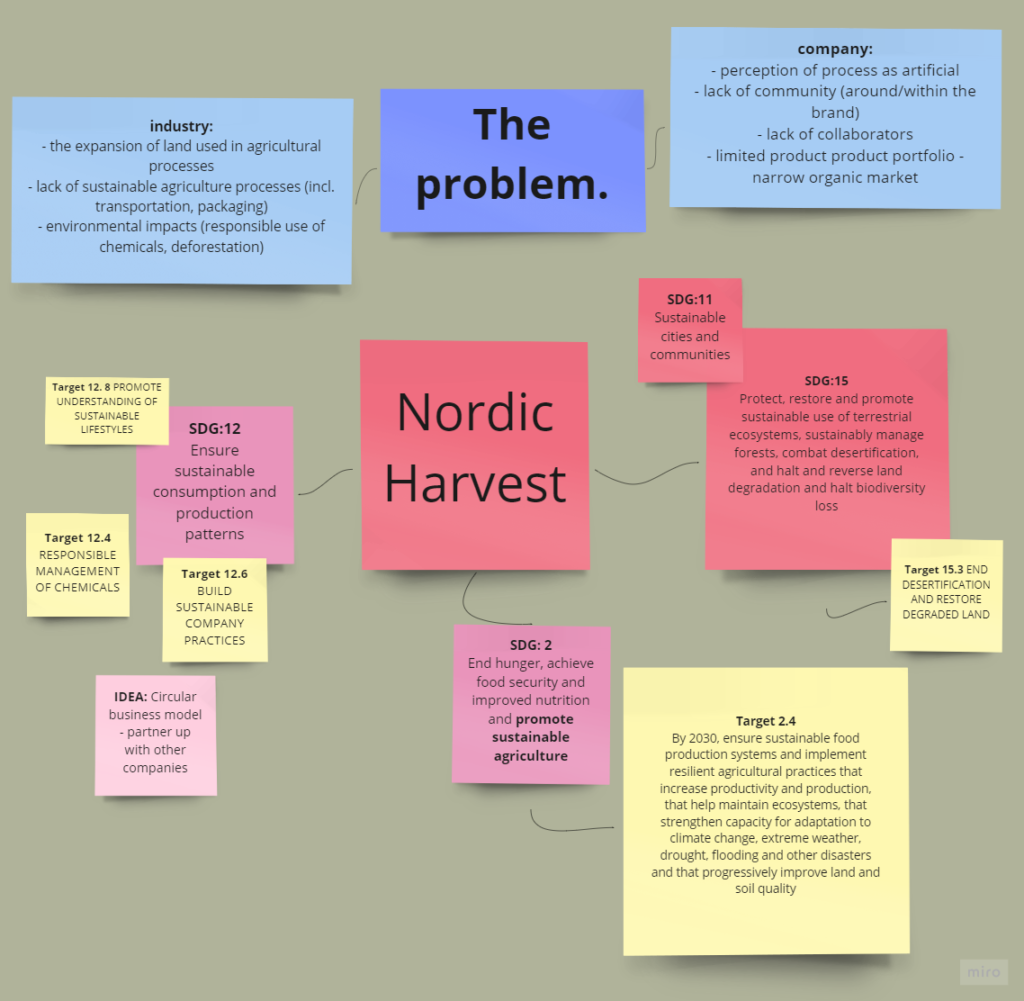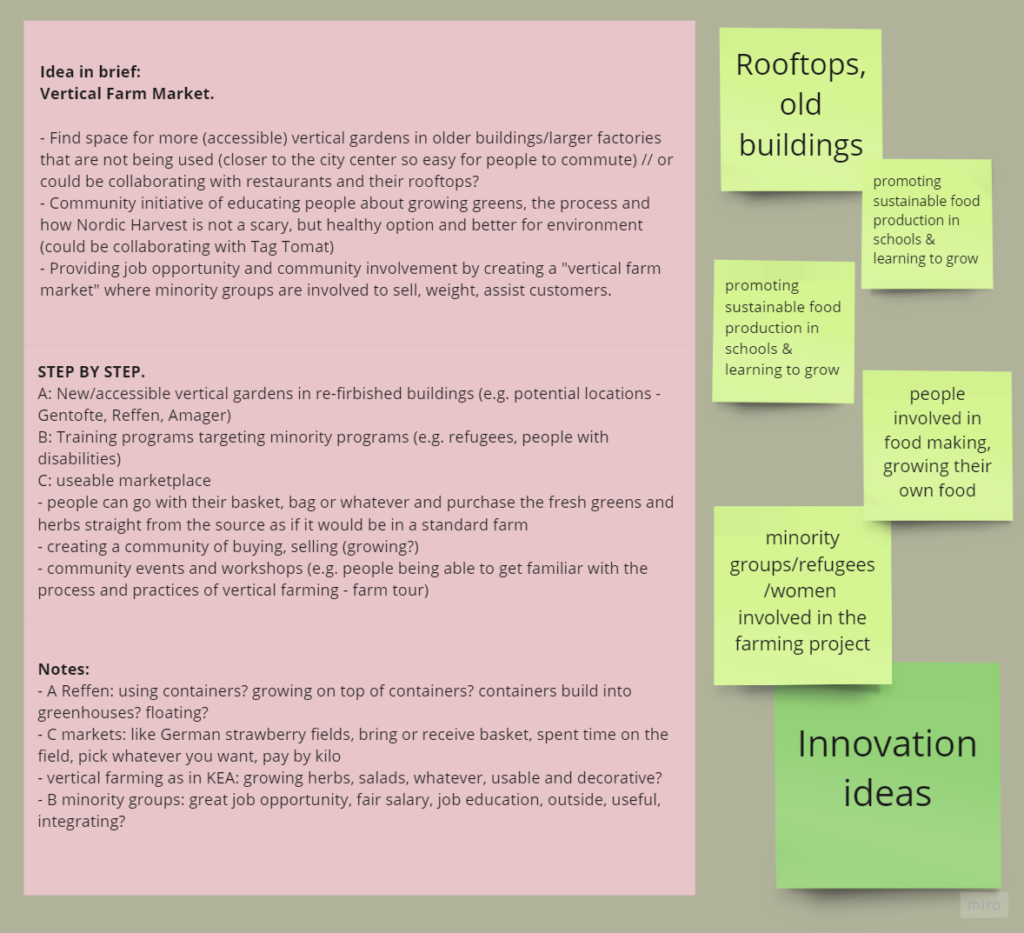Creativity and Innovation through vertical farming.
In mid term, our class at KEA entered Design, Business & Technology module 5 with focus on Creativity and Innovation. The aim of this module was ‘to strengthen our ability to drive creative processes’ that would help us ‘lead and facilitate innovation ‘ in the future.
After being divided into teams, we had to pick a company case to work on. Our task was to look into the value chain of our chosen company and create innovation within circularity, design, production or supply chain. Analysing the market, researching on companies through business model canvases and innovating solutions for clients have so far been our day-to-day activities at uni, although business and related topics are not precisely my usual field of study. Coming from a journalistic background, I found it a little complicated to understand the learning objects at first. Indeed, so many things were unclear to me and I could definitely feel the huge difference between my ordinary news-infused life and a business-based reality. Nevertheless, I found the module very interesting.

NORDIC HARVEST – THE FUTURE OF FARMING
Our team chose Nordic Harvest – a local Danish company that specialises in vertical harvesting of leafy greens using renewable energy and robotic technology. Located in Taastrup, Copenhagen, Nordic Harvest is Europe’s largest vertical farm that is disrupting traditional agriculture by challenging issues linked to the climate crisis.
We found the concept of Nordic Harvest interesting and decided to innovate its practices. Our team focused on its services, external communication and customer relations.
First, we examined the local market situation, analysed the data and system interconnections with help of SDG Accelerator Toolbox; and also conducted an interview with the company’s Chief Commercial Officer, Flemming Dyring.

After researching on Nordic Harvest and the company’s current market situation, we mapped out the its biggest issues. Our team found the company struggled with limited production and lack of communication with the customer as well as collaborators. In terms of the industry itself, we found the majority of the market did not follow sustainable agriculture practices (nor were willing to) and estimated the impact it had on the environment.
THE CONVENTION AND FACING SDGs
As there were various SDG challenges to take on, we had to narrow our focus to only one goal. According to the previous results of our research, we decided to look into goal 15 (Protect, restore and promote sustainable use of terrestrial ecosystems) with links to goal 11 (Make cities and human settlements inclusive, safe, resilient and sustainable). Then, we started brainstorming on innovation ideas.

We came up with ideas promoting Nordic Harvest’s sustainable agriculture strategy as well as reaching out to new clientele and local collaborators.
THE DISRUPTION
Our innovation is bringing Nordic Harvest to the consumer to educate and inform about vertical farming and its sustainable benefits. We are promoting more sustainable agriculture practices by:
- placing vertical farms to urban areas,
- building deeper consumer-product connections,
- creating a community around Nordic Harvest.
We are also disrupting the misconceptions linked to lab-grown goods as many customers are not aware of vertical farming or have not build up trust towards it due to lack of information.

Our innovation is to create more awareness about vertical farming and connect it with the consumer by bringing the farms into urban areas. For that we are placing transparent container showrooms in the City of Copenhagen. The designated showrooms are available for the public to follow the plants growing and harvesting through vertical farming. In addition, Nordic Harvest will offer shelves to rent so the public can take part in the process as well. To keep customers engaged, shelf renters can also watch their plants grow via an app and get informed once their greens are ready for pick-up.
As part of our project, we made a visual presentation of our innovation to illustrate the problem and our idea more easily. You can watch it below:


